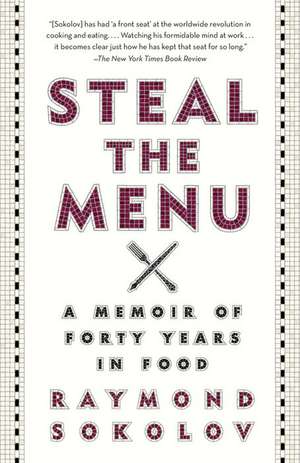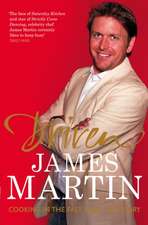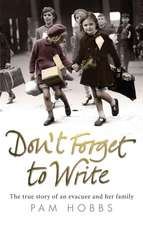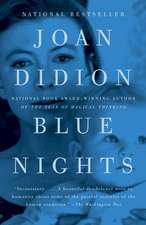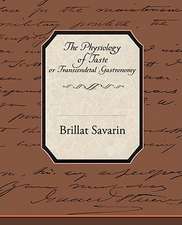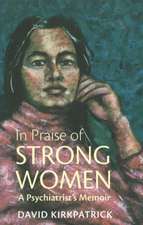Steal the Menu: A Memoir of Forty Years in Food
Autor Raymond Sokoloven Limba Engleză Paperback – 10 feb 2014
When Raymond Sokolov became food editor of The New York Times in 1971, he began a long, memorable career as restaurant critic, food historian, and author. Here he traces the food scene he reported on in America and abroad, from his pathbreaking dispatches on nouvelle cuisine chefs like Paul Bocuse and Michel Guérard in France to the rise of contemporary American food stars like Thomas Keller and Grant Achatz, and the fruitful collision of science and cooking in the kitchens of El Bulli in Spain, the Fat Duck outside London, and Copenhagen’s gnarly Noma.
Sokolov invites readers to join him as a privileged observer of the most transformative period in the history of cuisine with this personal narrative of the sensual education of an accidental gourmet. We dine out with him at temples of haute cuisine like New York’s Lutèce but also at a pioneering outpost of Sichuan food in a gas station in New Jersey, at a raunchy Texas chili cookoff, and at a backwoods barbecue shack in Alabama, as well as at three-star restaurants from Paris to Las Vegas.
Steal the Menu is, above all, an entertaining and engaging account of a tumultuous period of globalizing food ideas and frontier-crossing ingredients that produced the unprecedentedly rich and diverse way of eating we enjoy today.
Preț: 101.39 lei
Nou
Puncte Express: 152
Preț estimativ în valută:
19.40€ • 21.07$ • 16.30£
19.40€ • 21.07$ • 16.30£
Carte disponibilă
Livrare economică 01-15 aprilie
Preluare comenzi: 021 569.72.76
Specificații
ISBN-13: 9780307946355
ISBN-10: 0307946355
Pagini: 242
Ilustrații: 15 ILLUSTRATIONS
Dimensiuni: 130 x 201 x 15 mm
Greutate: 0.23 kg
Editura: VINTAGE BOOKS
ISBN-10: 0307946355
Pagini: 242
Ilustrații: 15 ILLUSTRATIONS
Dimensiuni: 130 x 201 x 15 mm
Greutate: 0.23 kg
Editura: VINTAGE BOOKS
Notă biografică
Raymond Sokolov ate his first meal in Detroit in 1941 and dined with tenacious curiosity in France as a correspondent for Newsweek. He went on to sustain himself writing about food at The New York Times and Natural History magazine, and, most recently, by covering restaurants worldwide for The Wall Street Journal. He is the author of The Saucier’s Apprentice, the novel Native Intelligence, and a biography of A. J. Liebling, Wayward Reporter. He lives in New York’s Hudson Valley.
Extras
Chapter One
First Bites
I was born on the eve of war and Holocaust on August 1, 1941, at Harper Hospital in Detroit. By family legend, I began eating immediately and with prophetic zest. The exact content of that first meal is unrecorded, but I am sure it didn’t come directly from Mom. She, like other advanced women of her time, believed that science offered a nutritionally superior and more hygienic way to feed her baby than she could herself.
Powdered “formula,” dissolved in water and delivered in sterilized bottles with rubber nipples, replaced the mammalian teat in millions of American households of that era. Of course, many mothers today still choose to trade the intimate mess and exposure of nursing for the technoid ritual of preparing and delivering formula to their infants: mixing, washing and sterilizing bottles, flicking the heated “milk” on their wrists to check that it isn’t too hot, remembering not to tilt the bottle too high for fear of drowning the child as he feeds, hunting for a new formula when Beloved Nipper refuses the one you started him out with.
I was not that balky kid. I never refused a bottle. Far from it. Not long after we returned home to our bastard Tudor house in the comfy Russell Woods neighborhood, I was sucking down three bottles at a feeding. At a year old, I weighed thirty pounds, and Geneva, the jovial black nanny, couldn’t force my galoshes over my chubby ankles.
Did this gorging cause the allergies that afflicted me as a toddler? Childhood asthma, sensitivity to eggs, sulfa drugs, feathers, dust—they all vanished once I began eating solid food in saner amounts. By the time I turned four, my weight had become normal for my age and height, but who can say if, fourteen years later, some molecular ghost of those bottled banquets lurking in my blood didn’t touch off the nearly fatal reaction I suffered from a wasp sting at an outdoor mixer at Brandeis University in the late summer of 1959. A wasp at Brandeis.
Tempting as it is to blame Mother for that (and so much else), the lusty appetite was all mine, a spontaneous urge as normal to me as a cry or a burp. She merely enabled it. Looking back on my writing career, I can’t help thinking that I was born hungry and unusually interested in what I put in my mouth. Nonetheless, my family life stood behind that natural inclination.
When my paternal grandfather, Barney Sokolov, arrived in Philadelphia around 1910 from Kremenchug, a dreary industrial hub on the banks of the Dnieper in what is now Ukraine, he enrolled in an engineering program at Temple University, hoping to leave behind the life he’d known as a farmhand and the training he’d had as a bookbinder in Europe. But marriage and fatherhood came quickly. My father was born in 1912. Then news of a better life in the American West led Barney away from a technical career in Philadelphia and back to the land.
Already in 1911, another immigrant Jew, Benjamin Lipschitz, who called himself Ben Brown, had begun leading some 130 other Yiddish-speaking, socialist immigrants to the state of Utah, where they formed a Zionist agricultural commune on Homestead Act land outside the barren town of Gunnison. The Clarion Colony never overcame the triple jinx of poor soil, insufficient water and undercapitalization.[1] But in our family, it was remembered as a heroic adventure. Baby carriages were threatened by coyotes. Even hardy shtetl products like my grandmother were unprepared for the comfortless life, despite the cordial welcome and advice they got from Mormon neighbors.
I was also unprepared for the bleakness of Gunnison, when I managed to piggyback it onto a working trip for Travel + Leisure magazine. I drove through town on a great-circle tour of the mountain time zone in the 1970s, that paradisiacal era when you could get off a flight at some midpoint and continue on later, for the same fare as an uninterrupted transcontinental nonstop. As a freelance writer, I maximized my work possibilities and my private travel interests by cannibalizing a Travel + Leisure ticket to California, issued to me as part of an assignment for an article on fish restaurants around the country, into two segments with a stopover in Salt Lake City. I paid local rates for a Hertz car, which I then drove south through Gunnison to Death Valley, continuing on to Mount Whitney, Reno, Pyramid Lake (Nevada) and back to Salt Lake for the flight to San Francisco. Along the way, I climbed Mount Whitney and baked a cake at the summit for a Natural History column on high-altitude baking (the batter boiled in my camper’s oven but did subside into an edible cake, which I, too nauseated from soroche, fed to an astonished hiker, who later nominated me, unsuccessfully, for a Guinness title as world’s highest baker) and did research for my biography of A. J. Liebling, Wayward Reporter, at Pyramid Lake, where Liebling had reported on the evils of aerial hunting of wild mustangs. I also spent a lurid, sleepless night at an isolated motel on a lonely stretch of Interstate 80 east of Winnemucca, kept awake by the angry shouts and then the ecstatic squeals of the couple in the next room.
My stop in Gunnison, Utah, had not been much pleasanter. The small town’s principal landmark was a prison. As I ate a toasted cheese sandwich at a lunch counter, next to a tobacco-chewing fellow in snakeskin boots, I tried to imagine my grandfather struggling to make a go of it there.
Little had changed from the bleakness the first arrivals had seen in 1911, as Goldberg noted: “As Ben Brown steered the wagon westward out of town, the colonists strained to see their land. . . . Although lacking in farm experience, Barney Silverman became concerned. The land sloped steeply, resembling the sides of a “large saucer.” The “raw earth,” as Isaac Friedlander described it, was bare of trees and covered with sagebrush, shadscale, and tall, thin grasses. Large patches of ground were devoid of any vegetation. . . . The site of the base camp was a particularly dubious place to begin cultivation. Yet, this determination was out of the Jews’ control. The stage of canal construction had dictated the initial area of farming in the southern part of the colony on some of the worst land in the tract. Silverman also noticed that no well had been dug for water.”
After five wretched winters, Clarion went under. Ben Brown stayed in Utah and prospered in the wholesale egg distribution business, the capitalist opposite of everything he and the Clarion Colony had once stood for. My hapless family, now including my uncle Eugene Victor Debs Sokolov, born in Utah in 1913, the year after the socialist E. V. Debs ran for president for the fourth time, decamped to that Kremenchug in Michigan, Detroit, where we had a wealthy second cousin.
Her welcome was a hollow one. She died soon of diabetes, leaving Grandpa Barney to improvise a living on the margins of the Detroit food economy. By the time I got to know him, in the early 1950s, he was operating an old-fashioned fish market—smoked whitefish, herring in barrels—on Michigan Avenue not far from the city’s skid row. At one point, he had banged together coops in his backyard, raised chickens and sold them to neighbors during a butchers’ strike. Even after he had his own shop, he kept his hand in as an agriculturalist with a little home vegetable garden that brought him his only worldly fame. In 1950, the gardening page of the Detroit News extolled the pumpkin he’d coaxed to grow up a post. When my sister and I were taken to Grandpa’s house on our weekly Sunday visit, I ran eagerly out to the garden to see this wondrous climbing cucurbit. It was very small and wrinkled.
The fish market was equally uninspiring. And it came to a tragicomic end. Grandma Mary inherited the building and, guided by my father, rented it out, first as a doctor’s office, then as a bookstore. Or so everybody thought. Yes, the tenants did sell books, but naughty ones, and there were girls upstairs. Police eventually raided the place, and Grandma Mary, a sheltered homebody, barely Anglophone, was cited for running a cathouse.
She, too, built a life around food, chopping carp for gefilte fish, preserving Kirby pickles with copious amounts of garlic and dill in Mason jars. We would carry home bushel baskets of them every fall, and kept them in the rec room, slightly embarrassed in our half-assimilated way, by this mark of jener Welt, the old country no one ever mentioned.
Although my father’s first language had been Yiddish, which he relearned in after-school classes, the world of his grandparents meant little more to Daddy than it did to me. He did, however, join a Jewish congregation (very reformed) just before I was born, and volunteered for the Public Health Service after Pearl Harbor (the army turned him down because of a transient heart condition) to take a stand as a Jew against Hitler. And who would argue that for a young doctor to interrupt his career in order to teach other military doctors how to treat venereal disease with the revolutionary new wonder drug penicillin was not a selfless and effective contribution to the war effort? He and my miserable mother spent three nomadic years in a catch-as-catch-can life around army bases, fearful they’d be snubbed in allegedly anti-Semitic officers’ clubs, and actually were snubbed by locals in South Carolina and Texas who had had their fill of strangers on their way to war theaters in Europe and the Pacific.
In our family mythology, these were hard times, a descent into lumpenproletarian scarcity. Mother never stopped wincing over the unpasteurized Grade D milk she had seen on supermarket shelves in El Paso, home to Fort Bliss, or retelling the horror story of the Chicano boy who tried to get me to go shoot rabbits. I was three by then, and I had heard the noise of revelry by night on V-E Day in Columbia, South Carolina, not long after my neurasthenic mother had blithely chopped off the head of a chicken she’d been raising in the yard. As I watched it run around spattering blood on the bare dirt, I had no way of appreciating the spectacle as a reenactment of Grandpa Barney’s poultry caper in Detroit twenty years before.
What did I think about that chicken, my first exposure to meat production? I wish I could say that this barnyard violence troubled my soul ever after and fattened the wallets of therapists. Not so; nor have I shrunk from offing rabbits and geese when the necessity presented itself.
Mother did not continue her career as a home butcher after we left Columbia. But she did bring back one exotic culinary habit from the war. Chili.
The same Mexicans who terrified her with their low-class Thumper bagging and unpasteurized milk also fed themselves with delicious Mexican food that she and Daddy learned to love.
How did my timorous parents, who were tenderfoots par excellence, unable even to find the Chinese laundry at Fort Bliss, end up adopting a lip-stinging Rio Grande chili as their signature family dish? No, they did not attend the annual Original Terlingua International Championship Chili Cookoff in a Texas ghost town. Instead, my parents learned about Mexican food because of gonorrhea. The leading nightclub operator in Juárez, the lively town across the border, via the bridge over the Rio Grande, heard that a doctor at Fort Bliss had a miracle drug that could cure his case of the clap. He called for an appointment, and Daddy explained that the drug was in short supply and he couldn’t treat him. Even U.S. civilians couldn’t normally get it, only military personnel and their “contacts.” So unless this Mexican had had sex with a WAC, or perhaps a GI, and could prove it, Daddy wasn’t authorized to treat him.
Horacio Gutiérrez, as I will call him, had not become the leading figure in the raffish nightlife scene of wartime Juárez by accepting refusals from low-level bureaucrats, even if they were captains in the U.S. Public Health Service. He made another phone call, this time to someone at Fort Bliss who outranked my dad, and ordered him to treat Señor Gutiérrez.
He did so quite happily and cured him. From then on, all three of us Sokolovs were personae gratissimae at Señor Gutiérrez’s club. All of Juárez was officially off-limits to U.S. servicemen, but my father’s rank was high enough to get him past the MPs at the border checkpoint. So we went often, and ate and drank on the house, developing a taste for the free food on offer in unrationed Mexico. I wore my tailor-made captain’s uniform and acquired a little serape and a tiny guitar, so that I could sit in with the Mexican “magicians” when they played “Cielito Lindo” and “Amapola.” It was also the beginning of my career as a student of ethnic food and as a restaurant-world insider.
First Bites
I was born on the eve of war and Holocaust on August 1, 1941, at Harper Hospital in Detroit. By family legend, I began eating immediately and with prophetic zest. The exact content of that first meal is unrecorded, but I am sure it didn’t come directly from Mom. She, like other advanced women of her time, believed that science offered a nutritionally superior and more hygienic way to feed her baby than she could herself.
Powdered “formula,” dissolved in water and delivered in sterilized bottles with rubber nipples, replaced the mammalian teat in millions of American households of that era. Of course, many mothers today still choose to trade the intimate mess and exposure of nursing for the technoid ritual of preparing and delivering formula to their infants: mixing, washing and sterilizing bottles, flicking the heated “milk” on their wrists to check that it isn’t too hot, remembering not to tilt the bottle too high for fear of drowning the child as he feeds, hunting for a new formula when Beloved Nipper refuses the one you started him out with.
I was not that balky kid. I never refused a bottle. Far from it. Not long after we returned home to our bastard Tudor house in the comfy Russell Woods neighborhood, I was sucking down three bottles at a feeding. At a year old, I weighed thirty pounds, and Geneva, the jovial black nanny, couldn’t force my galoshes over my chubby ankles.
Did this gorging cause the allergies that afflicted me as a toddler? Childhood asthma, sensitivity to eggs, sulfa drugs, feathers, dust—they all vanished once I began eating solid food in saner amounts. By the time I turned four, my weight had become normal for my age and height, but who can say if, fourteen years later, some molecular ghost of those bottled banquets lurking in my blood didn’t touch off the nearly fatal reaction I suffered from a wasp sting at an outdoor mixer at Brandeis University in the late summer of 1959. A wasp at Brandeis.
Tempting as it is to blame Mother for that (and so much else), the lusty appetite was all mine, a spontaneous urge as normal to me as a cry or a burp. She merely enabled it. Looking back on my writing career, I can’t help thinking that I was born hungry and unusually interested in what I put in my mouth. Nonetheless, my family life stood behind that natural inclination.
When my paternal grandfather, Barney Sokolov, arrived in Philadelphia around 1910 from Kremenchug, a dreary industrial hub on the banks of the Dnieper in what is now Ukraine, he enrolled in an engineering program at Temple University, hoping to leave behind the life he’d known as a farmhand and the training he’d had as a bookbinder in Europe. But marriage and fatherhood came quickly. My father was born in 1912. Then news of a better life in the American West led Barney away from a technical career in Philadelphia and back to the land.
Already in 1911, another immigrant Jew, Benjamin Lipschitz, who called himself Ben Brown, had begun leading some 130 other Yiddish-speaking, socialist immigrants to the state of Utah, where they formed a Zionist agricultural commune on Homestead Act land outside the barren town of Gunnison. The Clarion Colony never overcame the triple jinx of poor soil, insufficient water and undercapitalization.[1] But in our family, it was remembered as a heroic adventure. Baby carriages were threatened by coyotes. Even hardy shtetl products like my grandmother were unprepared for the comfortless life, despite the cordial welcome and advice they got from Mormon neighbors.
I was also unprepared for the bleakness of Gunnison, when I managed to piggyback it onto a working trip for Travel + Leisure magazine. I drove through town on a great-circle tour of the mountain time zone in the 1970s, that paradisiacal era when you could get off a flight at some midpoint and continue on later, for the same fare as an uninterrupted transcontinental nonstop. As a freelance writer, I maximized my work possibilities and my private travel interests by cannibalizing a Travel + Leisure ticket to California, issued to me as part of an assignment for an article on fish restaurants around the country, into two segments with a stopover in Salt Lake City. I paid local rates for a Hertz car, which I then drove south through Gunnison to Death Valley, continuing on to Mount Whitney, Reno, Pyramid Lake (Nevada) and back to Salt Lake for the flight to San Francisco. Along the way, I climbed Mount Whitney and baked a cake at the summit for a Natural History column on high-altitude baking (the batter boiled in my camper’s oven but did subside into an edible cake, which I, too nauseated from soroche, fed to an astonished hiker, who later nominated me, unsuccessfully, for a Guinness title as world’s highest baker) and did research for my biography of A. J. Liebling, Wayward Reporter, at Pyramid Lake, where Liebling had reported on the evils of aerial hunting of wild mustangs. I also spent a lurid, sleepless night at an isolated motel on a lonely stretch of Interstate 80 east of Winnemucca, kept awake by the angry shouts and then the ecstatic squeals of the couple in the next room.
My stop in Gunnison, Utah, had not been much pleasanter. The small town’s principal landmark was a prison. As I ate a toasted cheese sandwich at a lunch counter, next to a tobacco-chewing fellow in snakeskin boots, I tried to imagine my grandfather struggling to make a go of it there.
Little had changed from the bleakness the first arrivals had seen in 1911, as Goldberg noted: “As Ben Brown steered the wagon westward out of town, the colonists strained to see their land. . . . Although lacking in farm experience, Barney Silverman became concerned. The land sloped steeply, resembling the sides of a “large saucer.” The “raw earth,” as Isaac Friedlander described it, was bare of trees and covered with sagebrush, shadscale, and tall, thin grasses. Large patches of ground were devoid of any vegetation. . . . The site of the base camp was a particularly dubious place to begin cultivation. Yet, this determination was out of the Jews’ control. The stage of canal construction had dictated the initial area of farming in the southern part of the colony on some of the worst land in the tract. Silverman also noticed that no well had been dug for water.”
After five wretched winters, Clarion went under. Ben Brown stayed in Utah and prospered in the wholesale egg distribution business, the capitalist opposite of everything he and the Clarion Colony had once stood for. My hapless family, now including my uncle Eugene Victor Debs Sokolov, born in Utah in 1913, the year after the socialist E. V. Debs ran for president for the fourth time, decamped to that Kremenchug in Michigan, Detroit, where we had a wealthy second cousin.
Her welcome was a hollow one. She died soon of diabetes, leaving Grandpa Barney to improvise a living on the margins of the Detroit food economy. By the time I got to know him, in the early 1950s, he was operating an old-fashioned fish market—smoked whitefish, herring in barrels—on Michigan Avenue not far from the city’s skid row. At one point, he had banged together coops in his backyard, raised chickens and sold them to neighbors during a butchers’ strike. Even after he had his own shop, he kept his hand in as an agriculturalist with a little home vegetable garden that brought him his only worldly fame. In 1950, the gardening page of the Detroit News extolled the pumpkin he’d coaxed to grow up a post. When my sister and I were taken to Grandpa’s house on our weekly Sunday visit, I ran eagerly out to the garden to see this wondrous climbing cucurbit. It was very small and wrinkled.
The fish market was equally uninspiring. And it came to a tragicomic end. Grandma Mary inherited the building and, guided by my father, rented it out, first as a doctor’s office, then as a bookstore. Or so everybody thought. Yes, the tenants did sell books, but naughty ones, and there were girls upstairs. Police eventually raided the place, and Grandma Mary, a sheltered homebody, barely Anglophone, was cited for running a cathouse.
She, too, built a life around food, chopping carp for gefilte fish, preserving Kirby pickles with copious amounts of garlic and dill in Mason jars. We would carry home bushel baskets of them every fall, and kept them in the rec room, slightly embarrassed in our half-assimilated way, by this mark of jener Welt, the old country no one ever mentioned.
Although my father’s first language had been Yiddish, which he relearned in after-school classes, the world of his grandparents meant little more to Daddy than it did to me. He did, however, join a Jewish congregation (very reformed) just before I was born, and volunteered for the Public Health Service after Pearl Harbor (the army turned him down because of a transient heart condition) to take a stand as a Jew against Hitler. And who would argue that for a young doctor to interrupt his career in order to teach other military doctors how to treat venereal disease with the revolutionary new wonder drug penicillin was not a selfless and effective contribution to the war effort? He and my miserable mother spent three nomadic years in a catch-as-catch-can life around army bases, fearful they’d be snubbed in allegedly anti-Semitic officers’ clubs, and actually were snubbed by locals in South Carolina and Texas who had had their fill of strangers on their way to war theaters in Europe and the Pacific.
In our family mythology, these were hard times, a descent into lumpenproletarian scarcity. Mother never stopped wincing over the unpasteurized Grade D milk she had seen on supermarket shelves in El Paso, home to Fort Bliss, or retelling the horror story of the Chicano boy who tried to get me to go shoot rabbits. I was three by then, and I had heard the noise of revelry by night on V-E Day in Columbia, South Carolina, not long after my neurasthenic mother had blithely chopped off the head of a chicken she’d been raising in the yard. As I watched it run around spattering blood on the bare dirt, I had no way of appreciating the spectacle as a reenactment of Grandpa Barney’s poultry caper in Detroit twenty years before.
What did I think about that chicken, my first exposure to meat production? I wish I could say that this barnyard violence troubled my soul ever after and fattened the wallets of therapists. Not so; nor have I shrunk from offing rabbits and geese when the necessity presented itself.
Mother did not continue her career as a home butcher after we left Columbia. But she did bring back one exotic culinary habit from the war. Chili.
The same Mexicans who terrified her with their low-class Thumper bagging and unpasteurized milk also fed themselves with delicious Mexican food that she and Daddy learned to love.
How did my timorous parents, who were tenderfoots par excellence, unable even to find the Chinese laundry at Fort Bliss, end up adopting a lip-stinging Rio Grande chili as their signature family dish? No, they did not attend the annual Original Terlingua International Championship Chili Cookoff in a Texas ghost town. Instead, my parents learned about Mexican food because of gonorrhea. The leading nightclub operator in Juárez, the lively town across the border, via the bridge over the Rio Grande, heard that a doctor at Fort Bliss had a miracle drug that could cure his case of the clap. He called for an appointment, and Daddy explained that the drug was in short supply and he couldn’t treat him. Even U.S. civilians couldn’t normally get it, only military personnel and their “contacts.” So unless this Mexican had had sex with a WAC, or perhaps a GI, and could prove it, Daddy wasn’t authorized to treat him.
Horacio Gutiérrez, as I will call him, had not become the leading figure in the raffish nightlife scene of wartime Juárez by accepting refusals from low-level bureaucrats, even if they were captains in the U.S. Public Health Service. He made another phone call, this time to someone at Fort Bliss who outranked my dad, and ordered him to treat Señor Gutiérrez.
He did so quite happily and cured him. From then on, all three of us Sokolovs were personae gratissimae at Señor Gutiérrez’s club. All of Juárez was officially off-limits to U.S. servicemen, but my father’s rank was high enough to get him past the MPs at the border checkpoint. So we went often, and ate and drank on the house, developing a taste for the free food on offer in unrationed Mexico. I wore my tailor-made captain’s uniform and acquired a little serape and a tiny guitar, so that I could sit in with the Mexican “magicians” when they played “Cielito Lindo” and “Amapola.” It was also the beginning of my career as a student of ethnic food and as a restaurant-world insider.
Recenzii
“For forty years, [Sokolov] affirms, he has had ‘a front seat’ at the worldwide revolution in cooking and eating…Watching his formidable mind at work deconstructing nouvelle cuisine or creating a taxonomy of French sauces, it becomes clear just how he has kept that seat for so long.”
—The New York Times Book Review
“This entertaining memoir…doubles as a breezy, ranging history of American food, and the sociopolitical events that shaped it.”
—The New York Observer
“As gastronomic guides go, you can’t do much better than former New York Times and Wall Street Journal restaurant critic Raymond Sokolov, whose jaunty prose in Steal the Menu gets you a tableside seat everywhere from Tennessee barbeque pits to French haute cuisine temples.”
—Entertainment Weekly
“A knowledgeable look at the transformation of fine dining over the past half-century, viewed through the prism of the author’s personal history…foodies will find this book refreshingly different.”
—Kirkus Reviews
“Reading Raymond Sokolov’s wonderful Steal the Menu is like having dinner with one’s wittiest, most erudite and charming friend, someone who knows everything worth knowing about food, its history and culture, about chefs and restaurants, about how our cuisine and our kitchens have changed over forty years—and about how to tell an authentic key lime pie from an imitation. Bon appétit!”
—Francine Prose
“Steal the Menu is a lively insider’s account of goings-on in the American food scene over the last forty years. And who better to tell this story than Raymond Sokolov, one of America’s best food writers? With his keen ear for language, Sokolov is by turns authoritative and funny, deeply informed and irreverent. This book offers up a feast for the senses as well as the mind!”
—Darra Goldstein, founding editor, Gastronomica: The Journal of Food and Culture
“Ray Sokolov dines out delightfully on a life of dining out in the Western world’s most ambitious restaurants. His wit seasons his learning, which is considerable on a vast array of subjects, from classical French cuisine, to where to find the best hamburger in the Midwest, to barbecue in Texas. The result is a zesty stew, a chronicle of movements in cuisine across the decades and oceans. As an entertainment, Steal the Menu rates a full complement of stars.”
—Joseph Lelyveld, author of Great Soul
“Steal the Menu chronicles Sokolov’s forty years as an observer of the American and international food scene with delicious wit and erudition. Peppered with reflections on culinary history and tales of extraordinary journalistic adventures, Steal the Menu is a thought-provoking and delightful read.”
—Fuchsia Dunlop, author of Every Grain of Rice: Simple Chinese Home Cooking
“I read Steal the Menu straight through with pleasure. The writing is stylish, sometimes provocative, always informative, with a balanced perspective on the tumultuous changes at the table we’ve all lived through.”
—Dr. Andrew Weil, coauthor of The Healthy Kitchen
“Raymond Sokolov is very good company on the page. Steal the Menu is proof of that. His writing is witty and engaging, but what sets this book apart is its appreciativeness: food is food for thought, something to be curious about, as well as a huge pleasure.”
—Naomi Duguid, author of Burma: Rivers of Flavor
“This is an indispensable book for anyone and everyone who takes cooking seriously.”
—Jason Epstein, author of Eating
“[Sokolov] is a good traveling companion. Reading his writing is like being driven in an old, comfortable roadster, top down, evening falling, balmy…with the promise—because Sokolov always does his homework—of something really good to eat just down the road.”
—The Christian Science Monitor
From the Hardcover edition.
—The New York Times Book Review
“This entertaining memoir…doubles as a breezy, ranging history of American food, and the sociopolitical events that shaped it.”
—The New York Observer
“As gastronomic guides go, you can’t do much better than former New York Times and Wall Street Journal restaurant critic Raymond Sokolov, whose jaunty prose in Steal the Menu gets you a tableside seat everywhere from Tennessee barbeque pits to French haute cuisine temples.”
—Entertainment Weekly
“A knowledgeable look at the transformation of fine dining over the past half-century, viewed through the prism of the author’s personal history…foodies will find this book refreshingly different.”
—Kirkus Reviews
“Reading Raymond Sokolov’s wonderful Steal the Menu is like having dinner with one’s wittiest, most erudite and charming friend, someone who knows everything worth knowing about food, its history and culture, about chefs and restaurants, about how our cuisine and our kitchens have changed over forty years—and about how to tell an authentic key lime pie from an imitation. Bon appétit!”
—Francine Prose
“Steal the Menu is a lively insider’s account of goings-on in the American food scene over the last forty years. And who better to tell this story than Raymond Sokolov, one of America’s best food writers? With his keen ear for language, Sokolov is by turns authoritative and funny, deeply informed and irreverent. This book offers up a feast for the senses as well as the mind!”
—Darra Goldstein, founding editor, Gastronomica: The Journal of Food and Culture
“Ray Sokolov dines out delightfully on a life of dining out in the Western world’s most ambitious restaurants. His wit seasons his learning, which is considerable on a vast array of subjects, from classical French cuisine, to where to find the best hamburger in the Midwest, to barbecue in Texas. The result is a zesty stew, a chronicle of movements in cuisine across the decades and oceans. As an entertainment, Steal the Menu rates a full complement of stars.”
—Joseph Lelyveld, author of Great Soul
“Steal the Menu chronicles Sokolov’s forty years as an observer of the American and international food scene with delicious wit and erudition. Peppered with reflections on culinary history and tales of extraordinary journalistic adventures, Steal the Menu is a thought-provoking and delightful read.”
—Fuchsia Dunlop, author of Every Grain of Rice: Simple Chinese Home Cooking
“I read Steal the Menu straight through with pleasure. The writing is stylish, sometimes provocative, always informative, with a balanced perspective on the tumultuous changes at the table we’ve all lived through.”
—Dr. Andrew Weil, coauthor of The Healthy Kitchen
“Raymond Sokolov is very good company on the page. Steal the Menu is proof of that. His writing is witty and engaging, but what sets this book apart is its appreciativeness: food is food for thought, something to be curious about, as well as a huge pleasure.”
—Naomi Duguid, author of Burma: Rivers of Flavor
“This is an indispensable book for anyone and everyone who takes cooking seriously.”
—Jason Epstein, author of Eating
“[Sokolov] is a good traveling companion. Reading his writing is like being driven in an old, comfortable roadster, top down, evening falling, balmy…with the promise—because Sokolov always does his homework—of something really good to eat just down the road.”
—The Christian Science Monitor
From the Hardcover edition.
